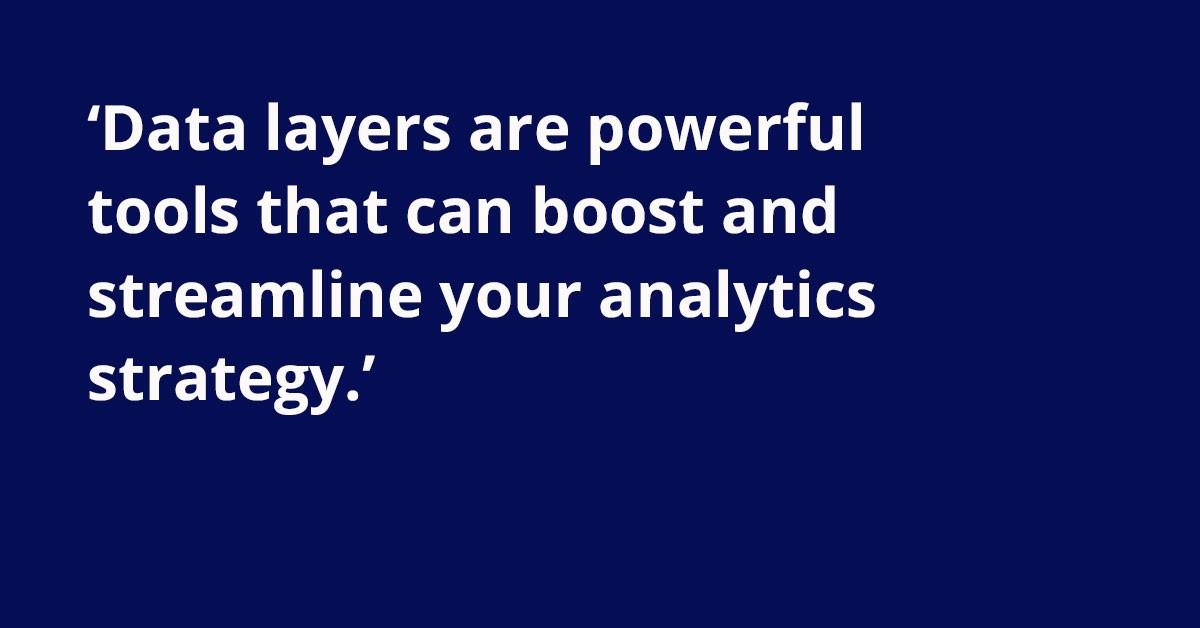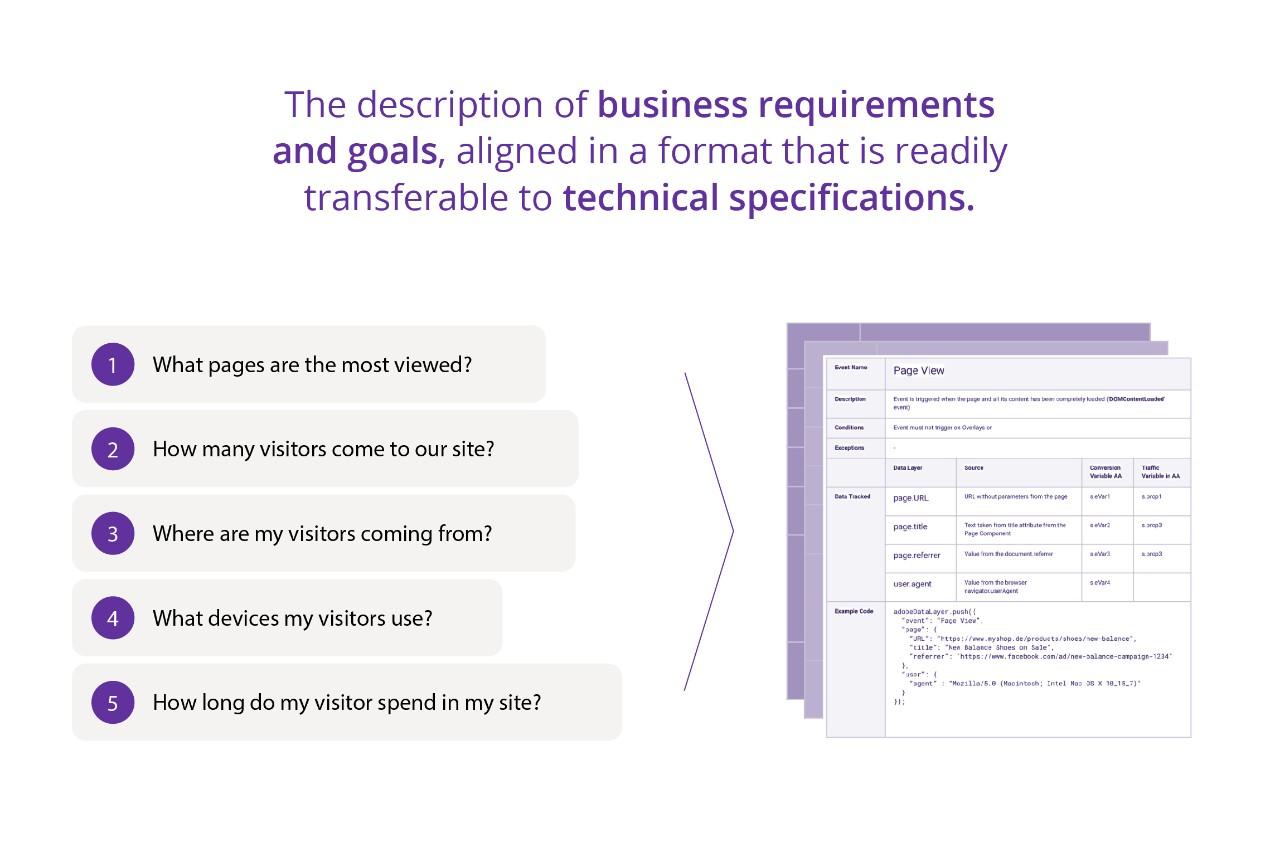Setting up a data layer that reflects your business goals

Data layers are powerful tools that can boost and streamline your analytics strategy. Some still tend to think that data layers are expensive, complex, or even unnecessary to implement – but today, we’re here to challenge those assumptions and dive deeper into what data layers can do for your business.
Technically speaking, a data layer is a JavaScript object that can temporarily store and process contextual data to be used by other applications – like tag managers. We use tag managers like Adobe Tags (formerly known as Adobe launch) to implement marketing tags or tracking pixels, which allow us to segment the way we track and target campaigns. However, configuring tag managers is a labor-intensive process, requiring custom code to be written to fetch data from the front-end of the site. This also means that when the front-end changes, it’s not usually communicated to the tracking team, which can result in broken tags and a compromised tracking solution.
This is where the data layer comes in.
How does implementing a data layer help your business?
Data layers make it much easier and more intuitive to collect the data we need and send it to other applications, both visually and technically. Populated data comes directly from the page and the components that are developed. For example, when developers code a banner at the top of a page, they are already handling information about that banner (i.e. size, position, links, images, etc) – if a definition of a data layer is provided, they can simply push that information to the data layer when a user interacts with the banner.
With the push to invest in data analytics and a data-driven strategy, it can be tempting to just track everything, then figure out what to do with the data – this is referred to as clickstream data. However, deriving insights from clickstream data can be very difficult and becomes exponentially more complicated to disentangle as more unstructured data is collected. This is why it’s important to work with stakeholders early on to clarify and translate business requirements and goals into technical specifications.
Best practices for implementing data layers based on business goals:
It’s much easier to implement data layers both technically and strategically if they are integrated from the beginning of the project with stakeholders engaged and invested. Here are some best practices and tips we have to share from our own experience:

- Work with stakeholders to define, categorize, and prioritize the questions they want to answer.
This is a crucial first step to engage your stakeholders in the ongoing development and use of the solution, making it easier for them to understand and derive insights from the data being collected, and ultimately to make decisions based on that data with clarity and focus.
- Document the process for both technical and non-technical people.
Our initial deliverables are comprehensive technical documentation of the data layer that is accessible to both technical and non-technical people so that the team has visibility into how the tool benefits the business holistically.
- Leverage the tracking infrastructure of Adobe Launch.
Typically, we assign an analytics engineer to help set up and maintain the tracking infrastructure using Adobe Launch to monitor ongoing data collection. The data layer documentation supports us in configuring Adobe Launch with naming conventions and minimum custom code, which means it can also prove useful to web analysts to understand what data is being captured when.
Implement painlessly with Adobe Client Data Layer (ACDL)
At Netcentric, we use Adobe Client Data Layer (ACDL) for its modern approach to data population and ability to get the data layer up and running incredibly efficiently.
Traditionally, we’ve had to use a W3C standard reference for developers to implement and structure the attributes of the data layer and explain the full lifecycle and maintenance points in detail. In many cases, it was a heavy lift for developers and required deep technical expertise in the subject. With ACDL, much of this burden is removed from the development team, as Adobe is able to handle key parts of integration like inserting code into the right places, capturing events, and pushing data points to the data layer, without developers handling every detail of the execution. As an open-source tool, you can also use ACDL with other technologies that are not in the Adobe stack – it works very well with Google Tag Manager, for example.
Our experts can work with your team to link business goals to technical execution, and leverage data layers to help you track and make data-driven decisions more efficiently than ever. Contact us today to learn more about what we can do for you.